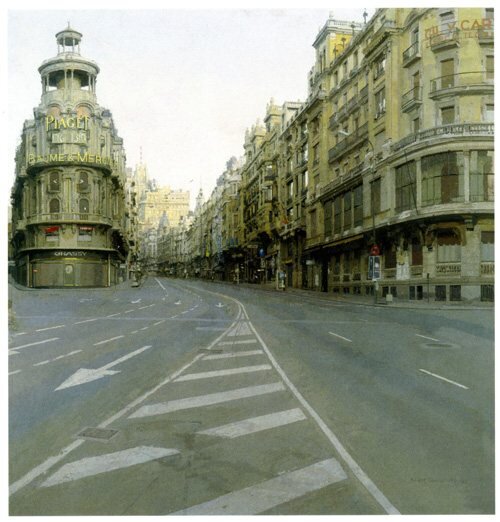TOWARD A NEW LANDSCAPE: Antonio López García -- The Quince and the Plumb Line
I don't give importance to technique. I condition everything so that the painting has spirit, in every way. If not, technique does not do me any good. I have done that: put in all the forms, ordered them in the best possible way, taken measurements. Everything was done correctly, but the painting ended without substance, vacant of emotion. And that, when I had that sensation, it seemed to me a complete failure, it seemed that technique wasn't worth anything. Not that technique doesn't have importance, but it's like the word is the link to the ideas and nothing more. So you acquire technique, but then what do you do with it? Antonio López García
Antonio López García is a Madrid Realist, a group of painters dedicated to working from direct observation. His paintings frequently take years and even decades to complete. While technique alone can never secure the outcome of a painting, it can provide, however, one more tool in the artist's tool box. Lopez Garcia uses two things that I think are worth exploring. This first is a plumb line -- an undeviating vertical line used as a reference when determining alignment. I had heard of their use, but never seen it in action until I watched a film of López García drawing a quince tree. He tied the plumb line to a limb of the tree and used it as a reference to the edge of his canvas, keeping everything in alignment.In the lower left of this screen capture you can see the plumb line.
When López García works on a landscape he also uses a positioning and measuring device. I don't know if it has a specific name, and artists have devised many different versions of this from using the end of a brush to using a black thread to take their measurements. I believe what López García is doing here is holding up a piece of wood that is the distance from his eye to the canvas. At the end of that piece of wood is a vertical piece of paper on which he can both mark the size of something in the landscape and also the angle of it. Notice that he presses the piece of wood into the hollow under his cheekbone. That would give him a consistent spot to position the wood. He also marks the ground where he stands. That way, each day that he returns to doing his painting he can set everything up in the same place. He is, thereby, minimizing the variables as he works on his painting over time. None-the-less, there will be many variables that he cannot control; the weather, the time of year, the light, and since he often takes years and sometime decades to finish a painting, the landscape itself can change with new buildings being built and old ones torn down. This film clip shows him using this device:
Here are more samples of his work.
Save










